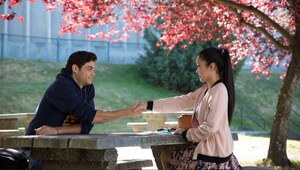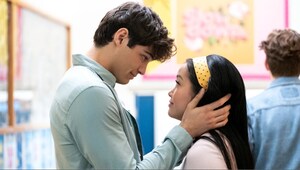“The new rainbow flag is not my definition of Pride”
At the 2019 Manchester Pride, brown and black bands were added to the Pride flag. Our columnist—an outspoken Indian lesbian— tells us why she isn’t exactly thrilled with these changes...


"'I feel inspired’, exclaimed my partner before drifting off into a sea of LGBTQIA+ parade, all seemingly having the absolute time of their lives. There we were—at a party-cum-protest, attended by an estimated 1.5-million rainbow family, flaunting flags and banners, kaleidoscopic eye shadows and glitter, plumes and unicorns, and an admirable display of latex—an Indian same-sex couple holding hands, dancing, with no judgment in sight. This was the London Pride 2019. It is one of the biggest and most diverse Prides yet, coinciding with the 50th anniversary of the 1969 Stonewall uprising in New York, which had paved the path for the modern Pride movement.
Until this year, I didn’t totally grasp the meaning of Pride with regard to being proud of a facet of my identity. The thing about swimming against the tide—being a queer woman in India—is the constant heartbreak of hiding who you are and whom you love. Heartbreak pounds you, makes you who you are. Feeling that you don’t belong is universal—and there is a poetic paradox in feeling seen as ‘they are kind of like me’ by an outsider. But how you wish to be identified is subjective and complex, and the vernacular of LGBTQIA+ identity continues to evolve. The choice to evolve without much care for how we categorise one another on the basis of sex, orientation, and colour is the stuff of joy, hope, and freedom that John-Imagine-Lennon and the rainbow flag embody for me.
The Pride flag was originally created in 1978, when Harvey Milk, the first-ever gay person to be elected to office as San Francisco city supervisor, invited artist Gilbert Baker to design a ‘collective’ emblem of the LGBTQIA+ movement. The first flags featured eight colours, with each stripe carrying a specific meaning: pink for sex, red for life, orange for healing, yellow for sun, green for nature, turquoise for magic, blue for peace, and purple for spirit. The flag itself has changed since 1978, going from eight to six colours. Pink fabric was withdrawn because of the difficulty in manufacturing at the time, and turquoise and blue were combined into one colour, royal blue. Since its introduction, the rainbow flag has become an all-inclusive symbol for peace, love and diversity.

This is not an art or history class in the genesis of the Pride flag, but a reflection on why the recent decision by the Manchester Pride to create a new flag for its 2019 event—one that includes black and brown stripes to represent black, Asian, and other ethnic minority groups—makes as much or little sense as the counter-intuitive five skin-tone emojis on your smartphone.
Don’t get me wrong here. In the light of a Stonewall report published in 2018 that found that 51 percent BAME (Black, Asian and minority ethnic) LGBTQIA+ experienced racism within the community, the Manchester Pride’s intent might sound well placed—to promote inclusivity. But, it is puerile to believe that a neatly hemmed-in brown stripe would magically dissolve heteronormative biases that we routinely face—not male, not white, not straight, not married. Instead of working on the racism within the LGBTQIA+ community, would adding gratuitous bands of two colours to the flag help? Not to mention, the visual tokenism is alienating—how long until they add a white stripe?; and cloaked in counter-narratives—once you start including this group or that group, you have lost the whole point of Pride as a celebration of otherness.
Agree that the colour of skin, although a huge problem, is something that each community struggles with, but so is religion. Do we start adding sacred symbols in the Pride flag next?”
more from Life

What the first trip with your partner says about your relationship

Signs that you’re a bad packer on your holidays and how to avoid them

Lessons that my string of unhealthy relationships taught me

Everything you need to know about the "Who is Your Chicago?" trend

#AskTheTherapist: ‘Should I break ties with my toxic sister?’

9 new restaurants and menus to try on your next visit to Goa

Here’s how to tell if you’re in a rebound relationship

Everything you need to know about green auras

All about angel number 2121

80 birthday wishes for your coworker (because sometimes cards are hard, okay?)
